Teas
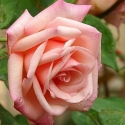
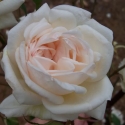
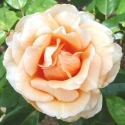
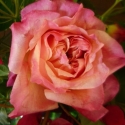
READ MORE
READ LESS
PAGE 1 ALL aka Anna Olivier Tea. A lovely old 'Tea' rose. The elegant, nodding blooms are shaded apricot with hints of cream and rose pink. Mid green foliage and a lovely fragrance. Flowers appear almost continuously from spring through to autumn. Prune lightly for the best results.
Anna Olivier Expected Stock Height: 20/40cm ? We will not have this plant 2025/26. Tea. An outstanding Rose with open flat flowers that have a multitude of petals. The blooms are a pleasing blend of pink, copper and soft orange. The foliage is dark and glossy and the stems have few thorns. A delightful fragrance and generosity of bloom complete the picture. France 1872. Archiduc Joseph Current Stock Height: 20/40 cm ? Container: pb8 ? WAS $45.99 LESS 20% aka Magnolia Rose Tea. Known as the 'Magnolia Rose' the blooms are large, double and well shaped in shades of creamy white blushed pink. Nice rich fragrance. The foliage is light green and plentiful. Likes a really warm sheltered position, repeats well from spring until autumn. 1838.
Devoniensis Bush Currently sold out. New season roses available next winter. Add to your waitlist to be advised when next in stock. Tea. A delicious old rose with long pointed buds that open to reveal fragrant, dark, velvety crimson red blooms that repeat throughout the season. Nice dark green foliage. Named after the French breeder who gave up being a tailor to breed roses. Good choice Francis. 1894.
Francis Dubreuil Expected Stock Height: 20/40 cm ? We will not have this plant 2025/26. Tea. The General is a robust grower with relatively thornless stems. The blooms are cupped and quartered and a unique blend of rosy pink overlaid with cream with hints of buff, yellow and red. Delicious scent and nice glossy green foliage. Repeats well. France 1899.
General Gallieni Current Stock Height: 20/40 cm ? Container: pb8 ? WAS $45.99 LESS 20% Tea. A trouble free rose that blooms profusely from spring through to autumn. The fragrant blooms are double, quartered and a blend of cherry red and salmon pink. Foliage is blue-green. Nice to pick. Compact habit, minimal pruning, loves the sun. From France 1878.
General Schablikine Expected Stock Height: 30/40 cm ? New stock expected End of May, 2026. Waitlist now. Estimated price TBA. Payment on order.
Tea. One of my favourite Tea roses. Nearly always in flower with very fragrant, semi-double peachy-pink flowers. A good example of the refinement and delicacy that Victorian rose-lovers so admired and just as lovely in today's gardens. The stems are relatively thorn free. 1873.
Jean Ducher Expected Stock Height: 20/40 cm ? New stock expected End of May, 2026. Waitlist now. Estimated price TBA. Payment on order.
Tea. Consistently popular world wide since its introduction in 1910. The Lady has long, copper-apricot buds that open to large, loose, double blooms of warm yellow. The stems and foliage have tones of purple-bronze which complement the blooms nicely. A heady, fruity fragrance is an added bonus.
Lady Hillingdon Expected Stock Height: 20/40cm ? We will not have this plant 2025/26. aka Lorraine Lee Climbing Tea Rose. A vigorous Rose from across the ditch with elegant, semi-double, open cupped blooms in shades of pink and apricot. Nice rich green foliage and dark stems and as you would expect with a Tea Rose, a delicious fruity fragrance. Flowers from spring through to autumn. Australia 1924.
Lorraine Lee Clg Expected Stock Height: 20/40 ? New stock expected End of May, 2026. Waitlist now. Estimated price TBA. Payment on order.

Has French origins and dates back to 1872
Habit: Upright
Leaves: Deciduous, Green
Mature Size (HxW): 100cm x 100cm
Jean Ducher 
This rose is sometimes confused with Monsieur Tillier and vice versa as they are very similar in appearance however they are definitely different. Archiduc Joseph was named after a great plant collector - Archduke Joseph of Austro-Hungary.
Habit: Upright
Leaves: Deciduous, Green
Mature Size (HxW): 1.5m x 0.9m
NOW $36.79
This rose has high susceptibility to downey mildew and we no longer stock it.
Habit: Upright
Leaves: Deciduous, Green
Mature Size (HxW): 1.2m x 1m
Habit: Upright
Leaves: Deciduous, Green
Mature Size (HxW): 0.9m x 0.6m
General Schablikine Archiduc Joseph 
Habit: Upright
Leaves: Deciduous, Green
Mature Size (HxW): 1.2m x 1m
NOW $36.79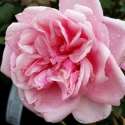
In ideal conditions this rose may require support due to height.
Habit: Upright
Leaves: Deciduous, Blue
Mature Size (HxW): 100cm x 75cm
Habit: Upright
Leaves: Deciduous, Green
Mature Size (HxW): 1.5m x 1m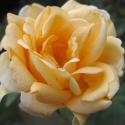
Named after Lady Hillingdon the wife of Baron Hillingdon of Hillingdon Court, Uxbridge where the breeder of this rose, Lowe and Shawyer had a nursery.
Habit: Upright
Leaves: Deciduous, Green
Mature Size (HxW): 1m x 1m
General Gallieni Jean Ducher 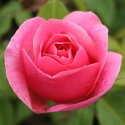
Habit: Upright
Leaves: Deciduous, Green
Mature Size (HxW): 1.2m x 1m
HL Nurseries Limited t/a Wairere Nursery
826 Gordonton Road, R D 1, Hamilton 3281 Ph: (07) 824 3430 Email: